|
|
| THE ROCK CYCLE |

The rock cycle illustrates in a schematic fashion the interrelationships between earth materials and processes. On this web page, one possible 'journey' around the cycle will be examined. The journey will start with a volcanic eruption. (After NASA diagram.) |
| IGNEOUS ROCKS - VOLCANIC |

Click on the red button to see a volcano erupt. |
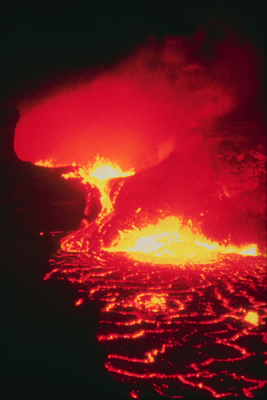
Erupting lava. |
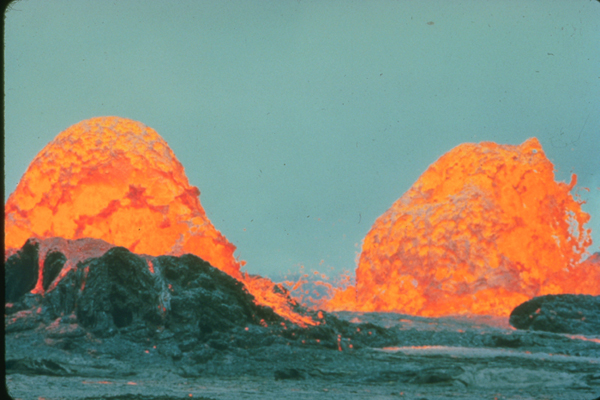
Erupting lava. |

Erupting lava. |
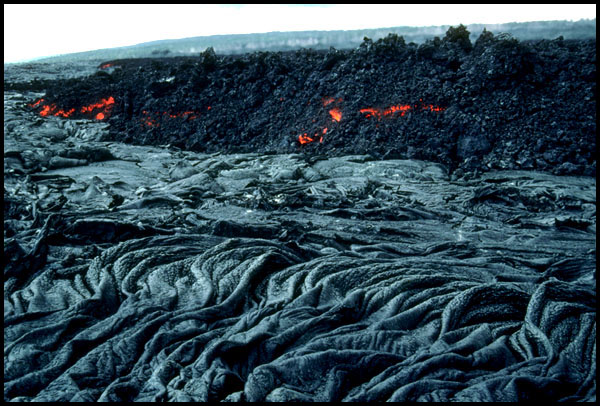
Cooling lava. |

Cooled lava - Volcanic rock. |

Foreground: cooled lava. Background: loose volcanic cinders. |

Loose volcanic cinders. |
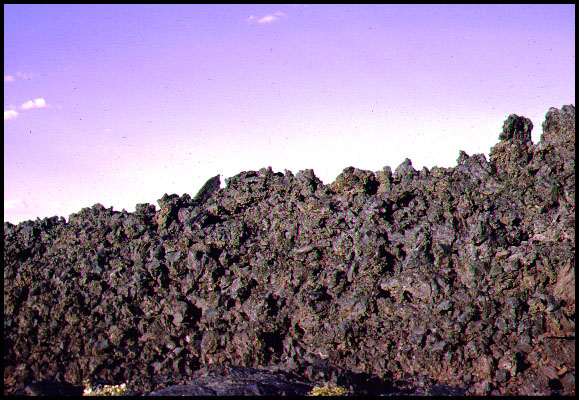
Rough-surfaced volcanic lava rock. |
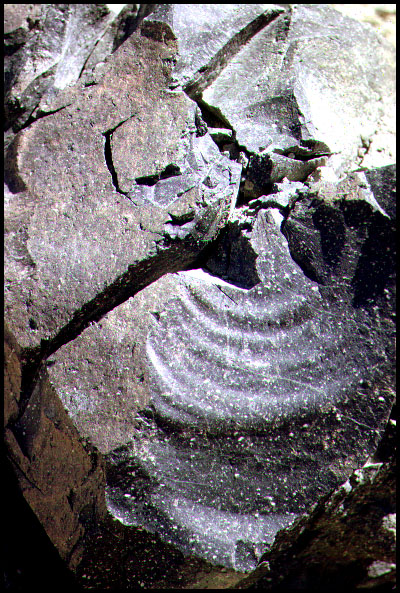
Volcanic glass. |
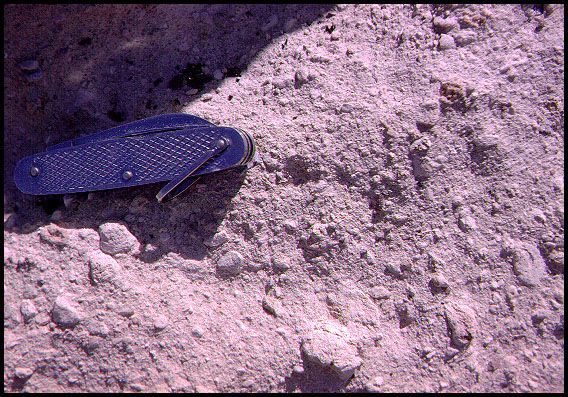
Poorly consolidated volcanic ash. |
| IGNEOUS ROCKS - INTRUSIVE |
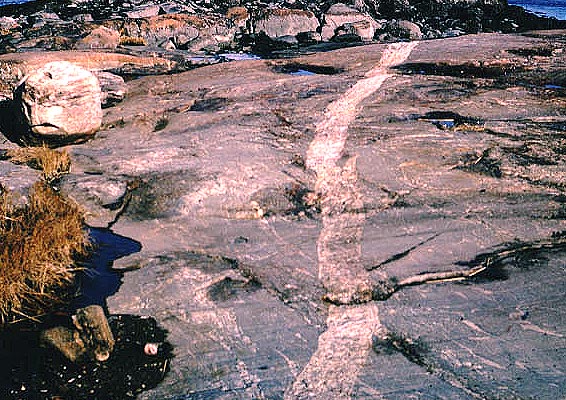
Igneous intrusion (pink) cutting across metamorphic rock. |
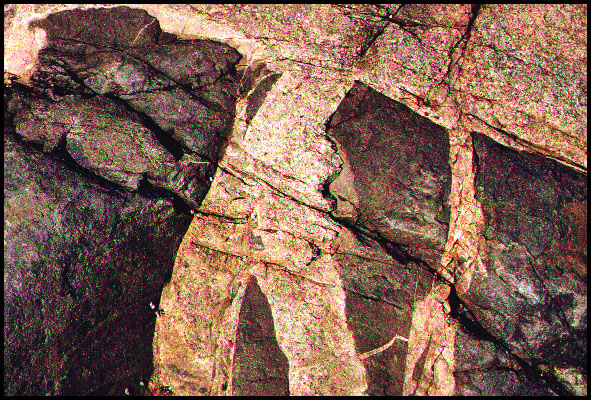
Molten magma intruded into metamorphic rock (dark brown) has cooled to form cross-cutting igneous bodies (speckled light orange). |
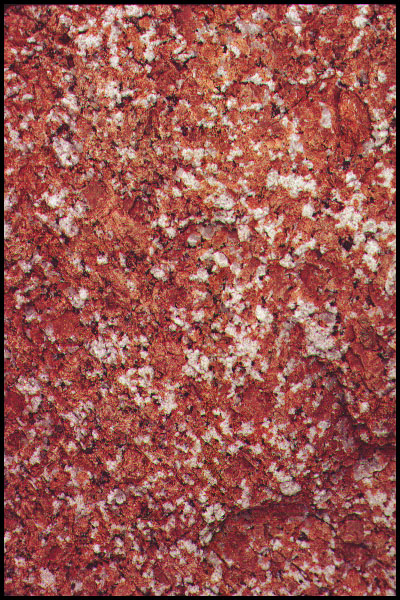
Detail of magma that has cooled to form granite. Note the orange, white, grey and black minerals that constitute the granite. |
| WEATHERING |

Click on the red button to see a rock broken apart by frost action. |
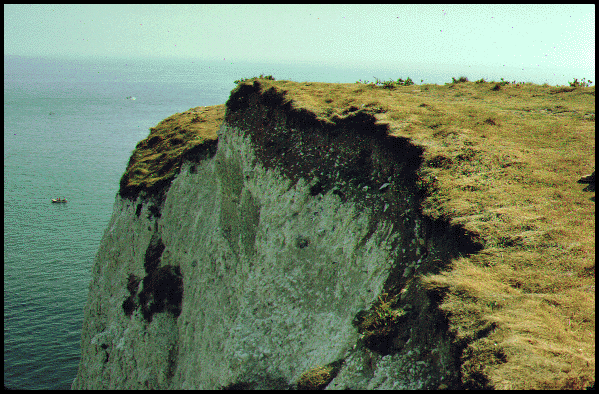
Chalk bedrock (white) has weathered to loose chalk fragments and dark soil. |

A weathered boulder begins to fall apart. |

Weathered granite (top photo) falls apart at the touch (bottom photo). |
| TRANSPORT |
| LANDSLIDES |
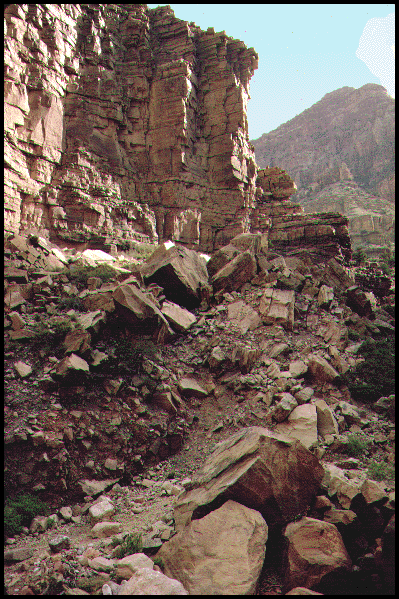
A cliff gradually disintegrates. The pieces of rock fall to the valley floor. |
| WIND TRANSPORT |

Wind blown sediment accumulates as sand dunes. |
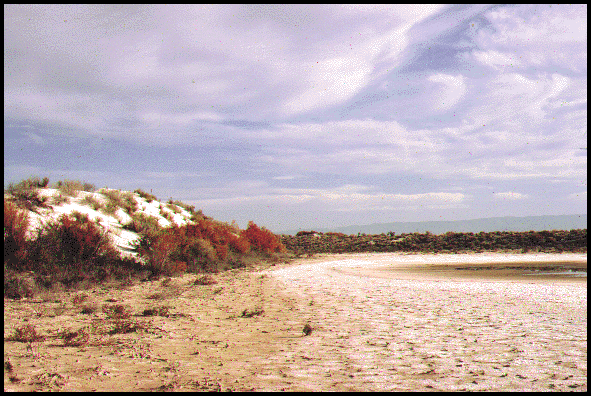
Wind blown sediment accumulates as sand dunes. |
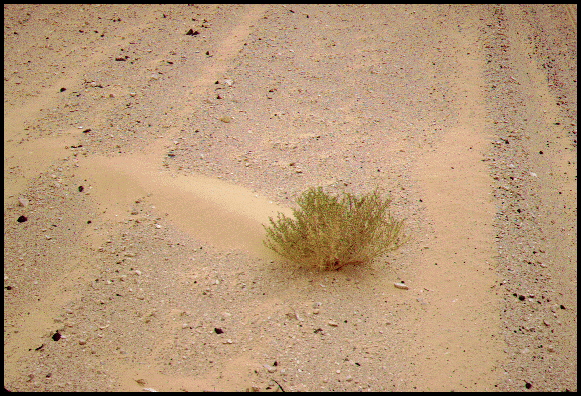
Wind blown sediment accumulates as sand dunes. |
| STREAM TRANSPORT |
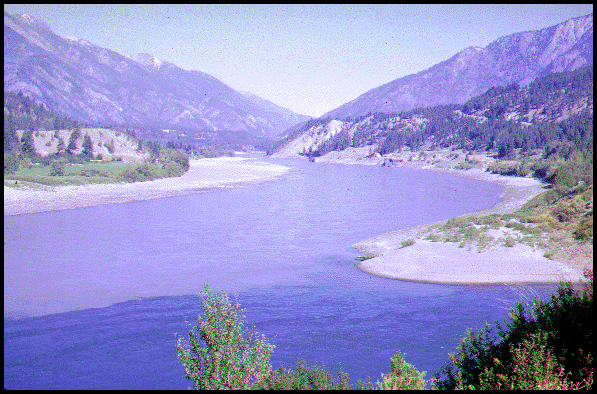
A stream laden with suspended milky colored sediment flows into a clear stream. |

Cobbles and pebbles line the bottom of a mountain stream. After a storm, when the stream is in flood, the cobbles and pebbles will be moved downstream. |
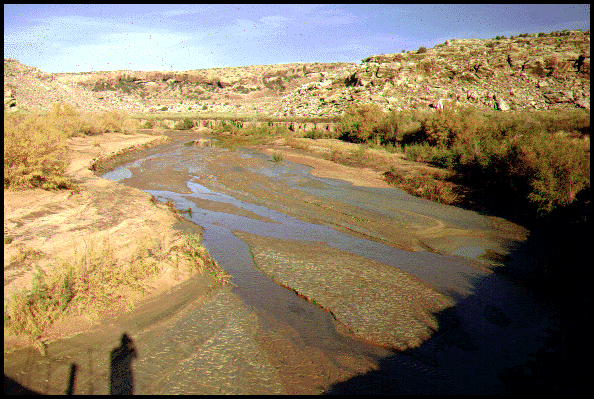
During low water time, the sediment this stream was carrying temporarily comes to rest in the channel. |
| GLACIAL TRANSPORT |
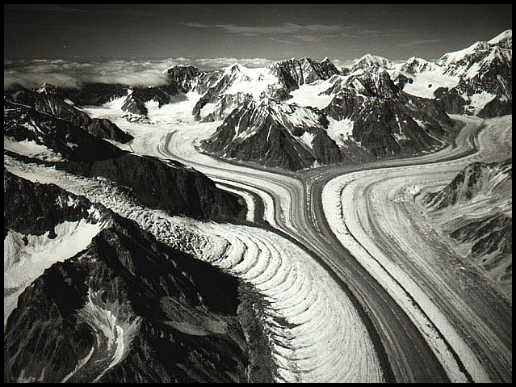
Glacial ice carries along sediment that has fallen onto it from nearby mountain slopes. |
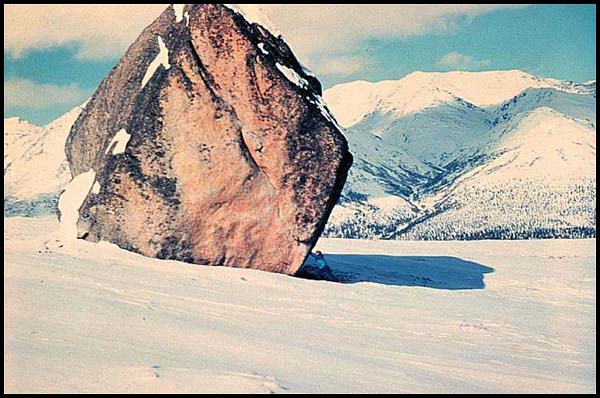
Glaciers are capable of carrying huge boulders. |
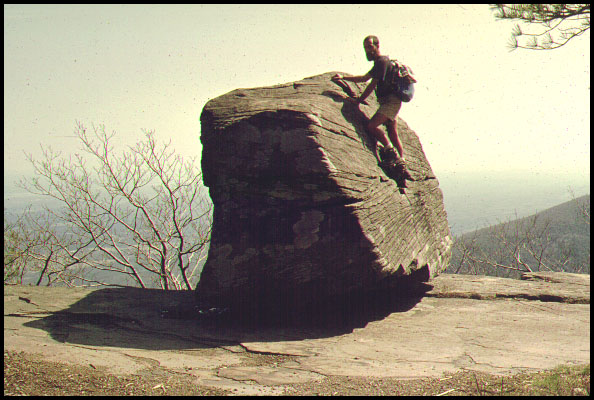
This mountainous area was once covered by a great thickness of glacial ice. As the ice melted away, a boulder that it was carrying was lowered down onto this mountain top. |
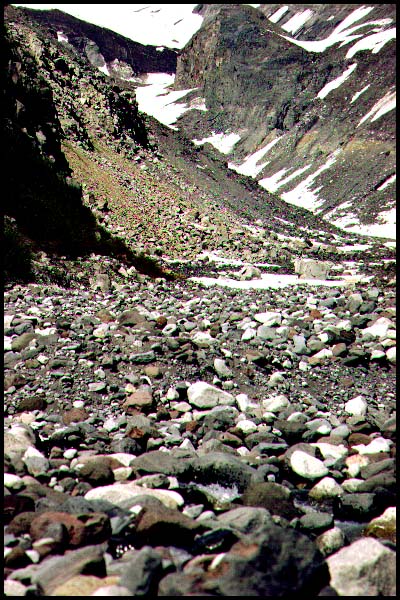
As glacial ice melts, the sediment the ice was carrying is lowered to the ground. |
| TRANSPORT BY LIVING ORGANISMS |
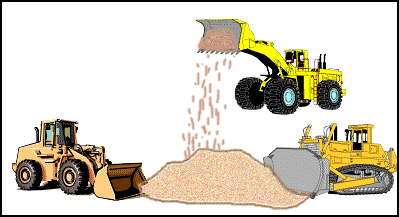
Living organisms, such as people, insects and worms transport huge amounts of sediment every year. |
| SEDIMENTARY ROCKS |
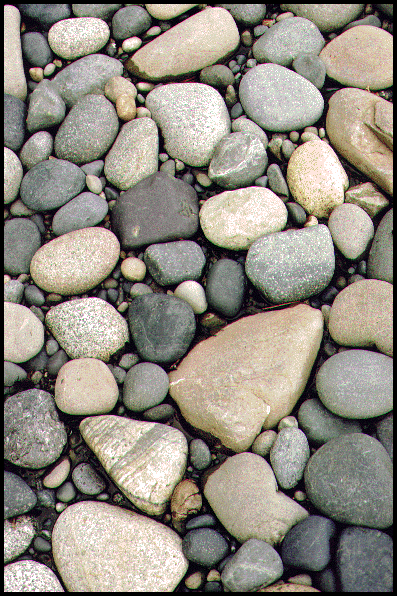
Loose pebbles. |
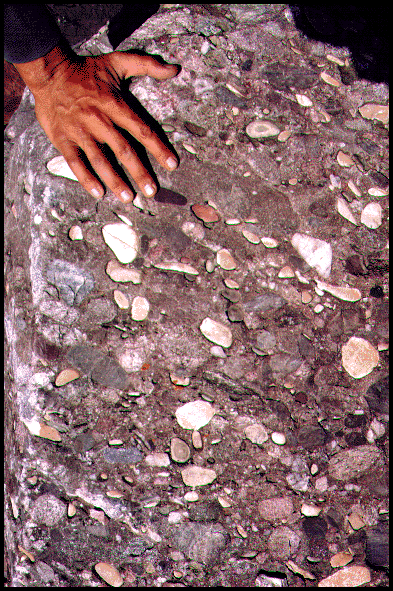
Pebbles cemented to become rock. |
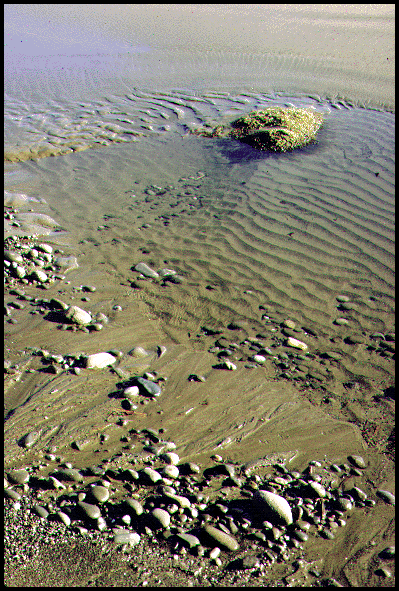
Underwater ripple marks in sand. |
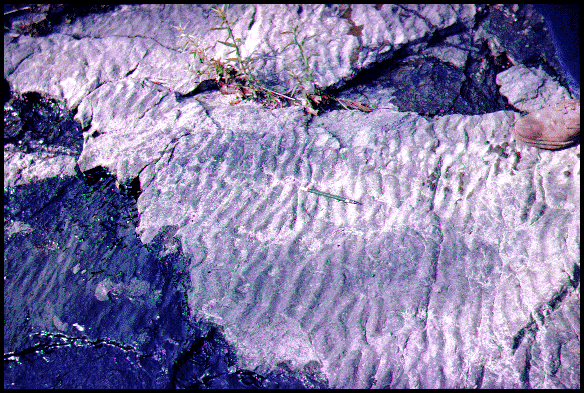
Ripple marks turned into rock. |

Wind deposited sand. |

Wind deposited sand turned to rock. |

Layered sedimentary rocks. |
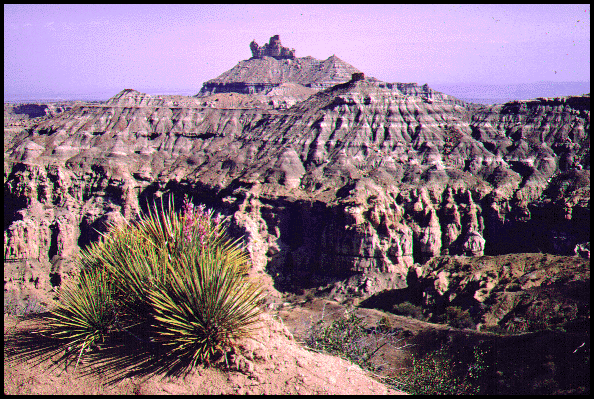
Layered sedimentary rocks. |
| DEFORMATION |

Deformed sedimentary rocks. |
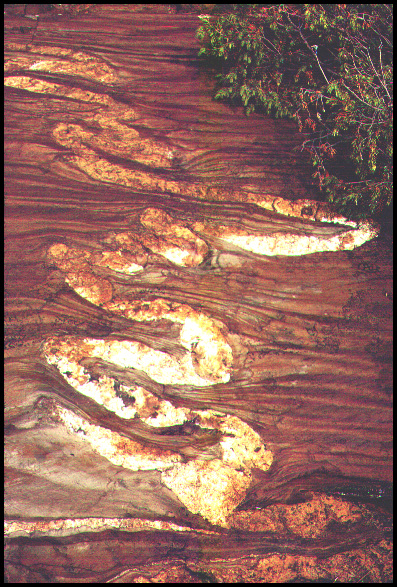
Sedimentary rocks that have been somewhat altered by heat and highly deformed. |
| METAMORPHIC ROCKS |
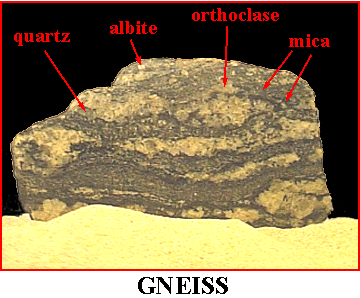
Rock that has been extensively altered by heat and pressure. |

Rock that has been extensively altered by heat and pressure. |
| MELTING |

Under conditions of high hear and pressure, metamorphic rock my be melted to form magma. That magma may be erupted to the surface as lava. |

One 'journey' around the rock cycle has been completed: magma cools to form igneous rocks (volcanic and intrusive); the rocks are weathered to loose material; the loose material (sediment) is transported and then deposited. The sediment turns into sedimentary rock. The sedimentary rock is squeezed and baked to form metamorphic rock. The metamorphic rock then melts to form new magma, and the cycle is ready to repeat. (After NASA diagram.) |